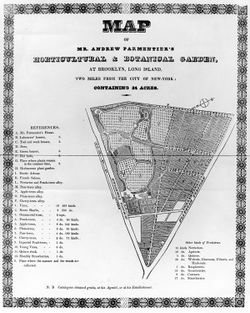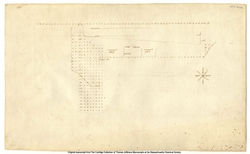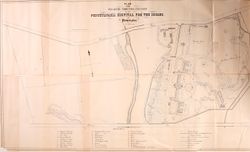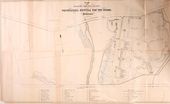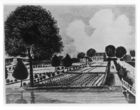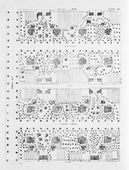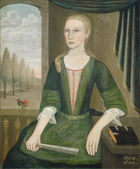Difference between revisions of "Alley"
Emily Pugh (talk | contribs) |
Emily Pugh (talk | contribs) |
||
| Line 36: | Line 36: | ||
===Attributed=== | ===Attributed=== | ||
| − | <gallery widths="140px" heights="170px" perrow=" | + | <gallery widths="140px" heights="170px" perrow="4"> |
Image:0259.jpg|Unknown, ''Young Lady with a Fan'' 1737, National Gallery of Art, Washington, DC | Image:0259.jpg|Unknown, ''Young Lady with a Fan'' 1737, National Gallery of Art, Washington, DC | ||
Revision as of 14:19, May 30, 2012
(Allée, Allies, Ally)
See also: Arcade, Avenue, Walk
Alley is used in the American setting to describe various forms of walks bordered by plantings on either side, and often appears alongside avenue and walk in treatises and descriptions (see Avenue and Walk).[1]
General dictionaries, such as those by Thomas Sheridan and Noah Webster, even define walks and alleys to be synonymous. Despite their similar meanings, however, the term “walk” was more broadly defined in specialist literature; walks occur in a variety of settings outside the garden (for example, rope walks). Alley, despite its frequent use denoting a narrow passage in a town, has a more particular association with the designed landscape than either avenue or walk, having been derived from the French verb aller (to go), which was often associated in British and American gardening treatises with French formal gardens. The repeated use of the phrase “walks and alleys” in American garden writing suggests that there was a distinction between the two terms, although that nuance of meaning is neither clear nor consistent. In the late seventeenth century, French treatise author Jean de La Quintinie often used the terms “alley” and “walk” interchangeably, and distinguished alleys as more narrow than avenues. Other treatise writers find the main criteria of an alley to be a walkway formed between two rows of plantings, defined by either low borders, such as in Lewis Beebe’s description of flowers lining the alleys at Lemon Hill in Philadelphia, or by tall, mature shade trees forming an enclosing canopy. This latter definition was exemplified at New Haven Burying Ground (as described by Timothy Dwight in 1796), André Parmentier’s horticultural and botanical garden, with its alleys of nectarine, peach, pear, apple, plum, and cherry trees, and Thomas Jefferson’s plantation, Monticello.
In contrast to the treatises, usage examples suggest that alley referred to walkways of all sizes planted on either side, from the pedestrian paths of Gray’s Garden in Philadelphia and Jefferson’s six-foot-wide “allies” between grass plots at Monticello to the alley wide enough for two carriages to pass at the New Haven Burying Ground. The “Tenpin Alley” in the pleasure grounds of the Pennsylvania Hospital for the Insane is an example of the use of the term to describe a site for bowling that looks completely different from the more common garden element, the bowling green (see Bowling green)
.
Alleys also varied in their configuration. Like walks, they included straight, curved, and zig-zagged designs. An avenue was often planted on either side and was generally straight. An alley, on the other hand, was associated both with the geometric regularity of the ancient style and, as in Parmentier’s usage, with descriptions of winding or serpentine walks in a “modern,” more naturalistic garden (compare with Ancient style). It is in this latter context that the Rev. Manasseh Cutler’s description of the State House Yard, Philadelphia, cites Hogarth’s “Line of Beauty,” an allusion to mid-eighteenth-century aesthetic theory (see Landscape gardening and Picturesque).
In any configuration, alleys functioned much like their counterparts, avenues and walks, in directing views in the landscape and in controlling circulation patterns. Like avenues, straight alleys were used to create an impressive approach to the main house’s front entrance and to direct a viewer’s gaze toward a focal point or vista. As G. Gregory (1816) advised, the illusion of depth could be further enhanced by making the alley wider at the entrance than at the termination. Like serpentine walks, a curvilinear alley led garden visitors gradually through the landscape, with each turn revealing a new view or perspective, as conveyed by Cutler’s 1787 description of Gray’s Tavern in Philadelphia.
Treatises describe alleys as usually laid with grass or gravel. The surfaces of American alleys are most commonly described and depicted as gravel, or rolled dirt, although an 1867 description of the garden of Charles Norris in Philadelphia mentions “graveled and grass walks and alleys.” In many parts of America, the climate was less suited to growing turf than in England, and the surface material was likely selected for its durability, drainage, ease of maintenance, availability, and cost, as well as aesthetic concerns. Archaeological examples suggest packed dirt (as at Arthur Allen’s Virginia home, Bacon’s Castle), shell, and gravel were used, although none of the walkways at these sites has been associated with the term “alley.” Based on extensive excavations at Williamsburg, Va., the quintessential image of the colonial revival garden, the brick walk, does not appear to have been used there (see Walk).
Images
Inscribed
Map of Mr. Andrew Parmentier's Horticultural and Botanic Garden, at Brooklyn, Long Island, Two Miles From the City of New York, 1828, Brooklyn Historical Society, Brooklyn, NY
Thomas S. Sinclair, Plan of the Pleasure Grounds and Farm of the Pennsylvania Hospital for the Insane at Philadelphia; Yale University Library, New Haven, Connecticut; Plan accompanied Thomas Kirkbride's "Description of the Grounds and Farm of the Pennsylvania Hospital," American Journal of Insanity vol. 4, (April 1848).
Associated
- 0431.jpg
Carter's Grove, 19th century, Jefferson. Princeton, N.J.: Princeton University Press. (p. 113) Beebe 1800
Attributed
- 0658.jpg
St. Paul's Church, New York 1800-1810, Manhattan, NY
Texts
Common Usage
- Anonymous, 22 May 1749, describing Charleston, S.C. (South Carolina Gazette)
- “a garden, genteelly laid out in walks and alleys, with flower-knots, &c. laid round with bricks.”
- Cutler, Rev. Manasseh, 13 July 1787, describing State House Yard, Philadelphia, Pa. (1987: 1:263)[2]
- “The numerous walks are well graveled and rolled hard; they are all in a serpentine direction, which heightens the beauty, and affords constant variety. That painful sameness, commonly to be met with in garden-alleys, and others works of this kind, is happily avoided here, for there are no two parts of the Mall that are alike. Hogarth’s ‘Line of Beauty’ is here completely verified.”
- Cutler, Rev. Manasseh, 14 July 1787, describing Gray’s Tavern, Philadelphia, Pa. (1987: 1:275)[2]
- “We then rambled over the Gardens, which are large—seemed to be in a number of detached areas, all different in size and form. The alleys were none of them straight, nor were there any two alike. At every end, side, and corner, there were summer-houses, arbors covered with vines or flowers, or shady bowers encircled with trees and flowering shrubs, each of which was formed in a different taste.”
- Brissot de Warville, J. P., 1788, describing the State House Yard, Philadelphia, Pa. (1792: 316)[3]
- “Behind the State-house is a public garden; it is the only one that exists in Philadelphia. It is not large; but it is agreeable, and one may breathe in it. It is composed of a number of verdant squares, intersected by alleys.”
- Dwight, Timothy, 1796, describing New Haven Burying Ground, New Haven, Conn. (1821: 1:191–92)
- “The field was then divided into parallelograms, handsomely railed, and separated by alleys of sufficient breadth to permit carriages to pass each other. The whole field . . . was distributed into family burying places. . . . Each family burying-ground is thirty-two feet in length, and eighteen in breadth: and against each an opening is made to admit a funeral procession. At the divisions between the lots trees are set out in the alleys: and the name of each proprietor is marked on the railing.”
- Beebe, Lewis, 1800, describing Lemon Hill, estate of Henry Pratt, Philadelphia, Pa. (Historical Society of Pennsylvania, Journal of Beebe Lewis, 1799–1801, vol. 3)
- “Mr. Pratts garden for beauty and elegance exceeds all that I ever saw—The main alley, 13 feet wide, and 20 rods long is upon each side graced with flowers of every kind and colours—and 18 wide. An alley of 13 feet wide runs the length of the garden thro’ the centre—Two others of 10 feet wide equally distant run parallel with the main alley. These are intersected at right angles by 4 other alleys of 8 feet wide—Another alley of 5 feet wide goes around the whole garden, leaving a border around it of 3 feet wide . . . next to the pales. . . . The border of the main alley is ornamented with flowers of every description.”
- Jefferson, Thomas, c. 1804, describing Monticello, plantation of Thomas Jefferson, Charlottesville, Va. (“Plan of Spring Roundabout at Monticello,” Huntington Library)
- “The allies are 6. f. wide that thro’ the lucerne makes that plot so much more than two acres.”
- Graydon, Alexander, 1811, describing the garden of Israel Pemberton, Philadelphia, Pa. (pp. 34–35)
- “laid out in the old fashioned style of uniformity, with walks and allies nodding to their brothers, and decorated with a number of evergreens, carefully clipped into pyramidal and conical forms.”
- Silliman, Benjamin, 1824, describing Albany, N.Y. (p. 59)
- “It is perfectly compact—closely built, and as far as it extends, has the appearance of a great city. It has numerous streets, lanes, and alleys, and in all of them, there is the same closeness of building, and the same city-like appearance.”
- Willis, Nathaniel Parker, 1840, quoting an early visitor’s description of Mount Vernon, plantation of George Washington, Fairfax County, Va. ([1840] 1971: 263)
- “At the extremity of these extensive alleys and pleasure-grounds, ornamented with fruit-trees and shrubbery, and clothed in perennial verdure, stands two hot-houses, and as many green-houses, situated in the sunniest part of the garden, and shielded from the northern winds by a long range of wooden buildings for the accommodation of servants.”
- Hovey, C. M., September 1851, “Notes on Gardens and Nurseries,” describing Rose Hill, residence of George Leland, Waltham, Mass. (Magazine of Horticulture 17: 411)
- “A main walk extends around the garden, with alleys leading from one side to the other.”
- Logan, Deborah Norris, 1867, describing the garden of Charles Norris, Philadelphia, Pa. (p. 6)
- “It was laid out in square parterres and beds, regularly intersected by graveled and grass walks and alleys.”
Citations
- Parkinson, John, 1629, Paradisi in Sole Paradisus Terrestris ([1629] 1975: 5)
- “for the fairer and larger your allies and walkes be, the more grace your Garden shall have, the lesse harme the herbes and flowers shall receive, by passing by them that grow next unto the allies sides, and the better shall your Weeders cleanseboth the beds and allies.”
- La Quintinie, Jean de, 1693, “Dictionary,” The Compleat Gard’ner ([1693] 1982: n.p.)
- “Allies, are such as we call Walks in any Garden. See Walks, and their Use and Proportion, see in the Body of the Book.
- “Allies, are said to be Bien Tirrées, Bien Repassées, or Bien Retirrées, that is, well plain’d, when they are laid smooth and firm and tight again, with the beater or rouling Stone after they have been scraped or turned up with an Instrument to destroy the Weeds.
- “Diagonal Allies. See Diagonal. [Diagonal Allies, or Lines, are Allies or Lines drawn cross one another through the Center of each, and cross any square in a Garden from corner to corner, thereby to give them the fuller view of the square.]
- “Parallel Allies. See Parallel. [Parallel Allies, are Allies of an equal breadth through their whole length, and running along in lines equally distant all along from the lines that compose the sides of the Allies which answer them] . . .
- “Avenues, are certain Allies or Walks in Gardens larger than ordinary, but more properly leading to the front of Houses.”
Notes
- ↑ In American landscape writing the term “alley” was used most often in its anglicized rather than its French spelling (allée).
- ↑ 2.0 2.1 Cutler, Manasseh. Life, Journals, and Correspondence of Rev. Manasseh Cutler. Edited by William Parker Cutler and Julia Perkin Cutler. 2 vols. Athens, Ohio: Ohio University Press, 1987. view on Zotero
- ↑ Brissot de Warville, J.-P. (Jacques-Pierre). New Travels in the United States Performed in 1788. New York: T. & J. Swords, 1792. view on Zotero
